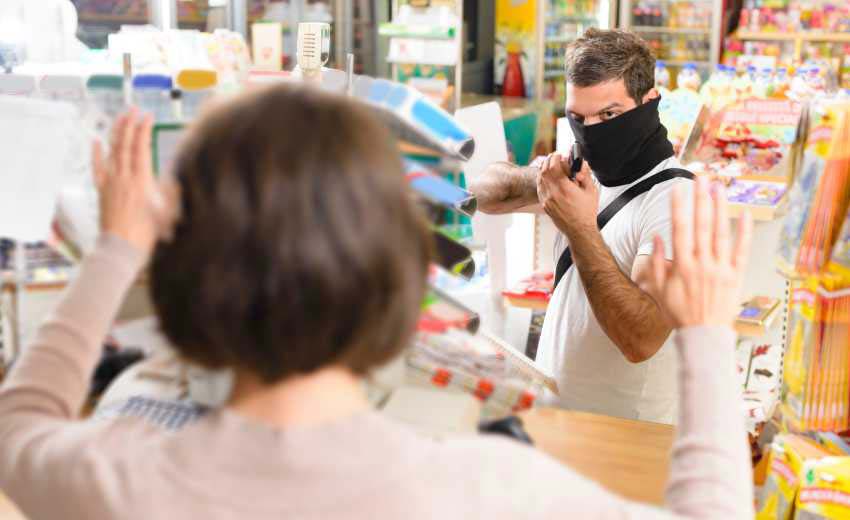asmag.com: What Are the Different Ways Theft Occurs in Retail Stores?
August 10, 2021
Original article published by Prasanth Aby Thomas, Consultant Editor, on
asmag.com.

Retail businesses are constantly under threat of shoplifting, robbery, and other similar activities that would hurt their business. This is a more critical issue than ever before because of the current economic and pandemic situation that has severely limited retail operations.
Most retail end customers are aware that electronic security solutions offer the best protection from retail theft. But many of them are not aware of the different ways that theft can occur. A clear understanding of the nature of threats is essential to ensure complete protection.
Here we present comments from some of the best industry experts on this matter.
Ross Wilks, Head of Marketing Communications, Vanderbilt International
The retail landscape is constantly changing and evolving, and many of the changes we see today are due to new technologies designed to streamline operations. The increased connection of devices and technologies has created opportunities that enable retailers to leverage advanced solutions to mitigate loss, enhance the customer experience, and streamline operations.
Beyond new capabilities, retailers have a great deal to protect. Whether you own a small shop or manage a multi-story shopping center, you need to ensure a secure space for employees and customers. At the same time, you must also protect inventory and prevent fraud. But since stores vary significantly in size, scope, and security requirements, what is the best approach to building a holistic security and loss prevention program?
In addition, retailers have confronted unprecedented business and loss prevention risks over the past year and a half. They have been forced to address a limited workforce, closures, looting, and growing organized crime and theft. These challenges have forced them to look to new methods to help regain control over the evolving retail environment. What worked in 2019 won’t necessarily work going forward.
Nigel Waterton, CRO, Arcules
Unfortunately, the COVID-19 pandemic dealt a devastating blow to retailers around the world. Not only were they forced to shut down based on regional requirements, but they also had to address looting, theft, and hiring challenges. Thankfully in 2021, there are signs of growing health in the sector.
Because of the aggressive vaccination distribution, the easing of COVID-19 restrictions, and increased consumer demand, the National Retail Federation (NRF) predicts 2021 retail sales growth between 6.5 and 8.2 percent this year.
When it comes to risk, organized retail crime continues to be a significant problem. NRF reports that three-quarters of retail companies have been victims of ORC and say they see more cases and higher losses.
Nigel Ashman, President, ONVU Retail
The retail environment has never faced the challenges it is facing now. COVID-19 wreaked havoc on operations, forcing stores to shut down, re-evaluate operations, and transform online experiences. The rise of e-commerce has cast a significant shadow over brick-and-mortar retail over the past years, and traditional brick-and-mortar stores fell into decline.
But now that life is returning to something approaching normal, the retailers that managed to survive are working on a comeback. In fact, the trend many have experienced so far is a jump in customer visits and revenue. While some stores are still working their way back, some are already excited about the future.
But retailers still face significant risks from internal and external theft, organized retail crime, and liability issues. And because of these threats, they are continually searching for ways to mitigate risk and enhance the safety of their employees and customers. Loss prevention (LP) professionals turn to implementing comprehensive and intelligent security systems throughout their stores to mitigate these problems, and today, smart technologies can help them stop crime in its tracks.
Alan Stoddard, President, Cognyte SIS
The shopping experience is evolving. Consumers are looking for an experience, one that transcends the traditional mall setting. Now, even in the wake of COVID-19, shopping centers are considered a destination, a place where retail, dining, health and wellness, and entertainment collide. The anchor stores of yesterday have been replaced by popular restaurants, bars, spas, fitness centers, and movie theaters. But the evolution of the shopping center also brings risks.
We’ve seen active shooters and looters targeted retail shops and entertainment districts. Therefore, facilities must take a more proactive approach than ever before to ensure the safety of their establishments, which is paramount to creating a positive and secure shopping experience. We’re seeing retailers look to boost their proactive measures by combining a robust mix of leadership initiatives, innovative processes, strong partnerships, and technology deployments.
The bottom line is that with millions of dollars of inventory stored across multiple facilities, even the largest and most successful retailers in the world are likely to be targeted for fraud, theft, vandalism, and violent crime. These risks put the safety of customers and employees in jeopardy while ultimately impacting the overall business and its bottom line. That’s why security and safety programs and aligned technologies are critical to ongoing retail success.
Steve Humphreys, CEO, Identiv
Employee theft is, unfortunately, a major loss contributor for retail stores. This can mean an employee is stealing merchandise, money from the POS, or involving friends in elaborate return/refund schemes. External (i.e., customer) theft is most often caused by shoplifting or breaking and entering.